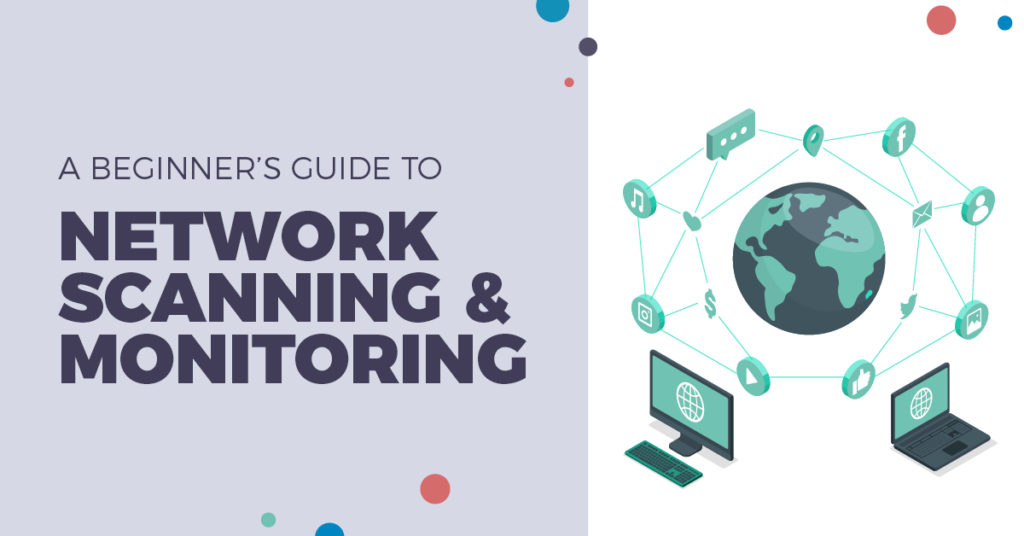Written by Timothy Stover
Right now…without looking….can you identify all the devices on your or your company’s networks?
And by all, I mean mobile phones, VoIP endpoints, tablets, and IoT devices, not just printers and computers. It’s a scary thought if you can’t, because if you are (or are going to be) a network engineer, system administrator, or similar IT specialist, it’s your job to know this [em] or at least to be able to discover them, very quickly, with the help of common network tools.
Cybersecurity starts with network security. Using network security tools is one of the most effective ways to protect against attacks. With a skilled operator, network tools can help identify and prevent unauthorized sniffs, taps, pings, pokes, eavesdrops, or even infiltration of your networks.
They are designed to monitor network traffic, detect anomalies, and prevent unauthorized access to sensitive data. Understanding how these tools work and how to use them effectively is essential for anyone working in the field of cybersecurity.
Here are three benefits of having a solid grasp of network tools can bring to anyone working in cybersecurity:
1.) Identifying and preventing security breaches. One of the main purposes of network tools is to monitor network traffic for suspicious activity and send an alert when a potential breach is detected. The faster a breach is detected, the faster you can take action to prevent valuable credentials or data from compromise.
2.) Making your security operations more effective. Techniques like running strings and filters in Wireshark can automate routine security operations, freeing up your security personnel to focus on any suspicious findings.
3.) Keeping up-to-date with the latest threats. Cyber threats are constantly evolving. As it is, I spend a solid hour per day going through my threat news feeds and blogs to hear about and avoid the latest cyber disaster du jour. That’s valuable time that I don’t need to be spending on routine network packet inspection. Network security tools can provide real-time information about potential threats and vulnerabilities, so you can stay ahead of the curve and implement proactive security measures.
The pandemic and its aftermath forced many companies to offer remote work, which as a remote worker myself, I find has introduced a whole new set of cybersecurity challenges.
Remote employees often have less secure networks and devices at home or don’t have the knowledge to secure their wireless router. Worse, they may go to coffee shops for free Wi-Fi or use a shared coworking situation with unknown security. Does ransomware scare you? Remote workers can be a prime ransomware target, either as unprotected low-hanging fruit or from a focused attack.
With challenges come new job opportunities – right? But who’s filling all the new cybersecurity job roles? As *both* a remote employee and a cybersecurity trainer, I’ve thought a lot about the need for hands-on training. You can watch YouTube tutorials and read the forums, but hands-on practice is the only way to test for sure whether you know how a network works, what normal traffic looks like, and what normal traffic DOESN’T look like.
So what do we do?
Let’s go back to the basics. In cybersecurity, it’s paramount that you know networking, OS, and virtual machines.
To help practitioners gain a deeper understanding of network security tools, we created a course aimed at IT support roles, novice network engineers, and entry-level security practitioners that’s centered around hands-on training.
This course is designed to provide participants with hands-on experience using a variety of network security tools. It also covers basic Internet operations, virtual machines (and why we use them), network scanning, and vulnerability assessment.
This way, you can say for sure that you have the basic chops for network surveillance, including a grasp of network nuts and bolts… AND experience with the tools used every day by cybersecurity professionals!
The tools we selected for this course are not random choices from the many top-ten lists out there. We picked freely available tools that were also voted the most popular tools for their specialty area. The core tools featured are Wireshark, Nmap, Zenmap, Masscan, Nessus, BurpSuite, and Ping – the tools you’re guaranteed to run into out in the wild (and in job postings).
After taking this labs-based course, a participant should be able to:
- Conduct a network scan to identify potential security vulnerabilities
- Use a vulnerability scanner to identify potential weaknesses in a network
- Use a packet sniffer to monitor network traffic for suspicious activity
- Understand basic security measures to protect against common threats
In conclusion, network security tools are essential for anyone working in the field of cybersecurity. Understanding how these tools work and how to use them effectively is critical for preventing security breaches, increasing the efficiency of network and security operations, and staying up to date with the latest threats. If you are interested in improving your cybersecurity skills, consider taking the Network Monitoring and Scanning course to gain hands-on experience with a variety of network security tools.
If you want to learn more about how N2K helps organizations know what’s on their network right now, and how to defend it… let’s chat.


